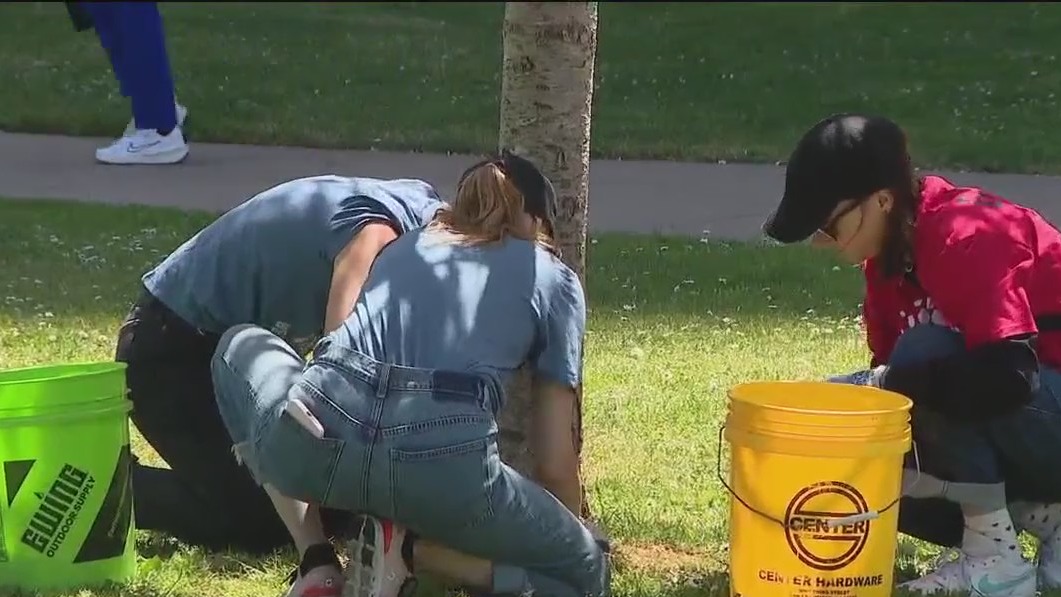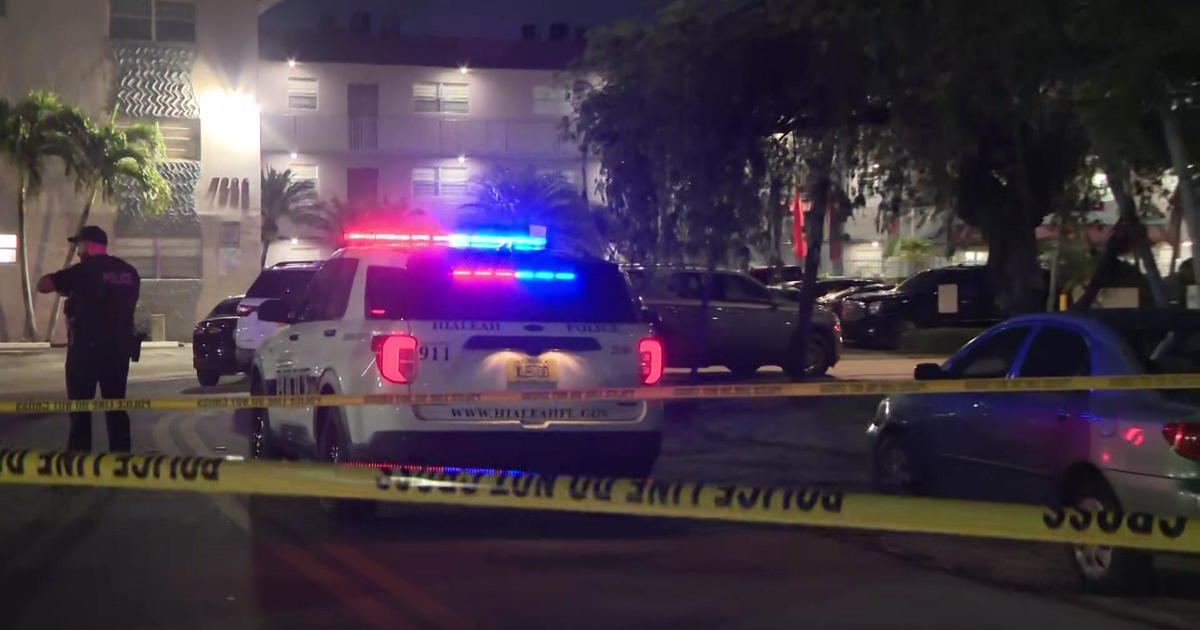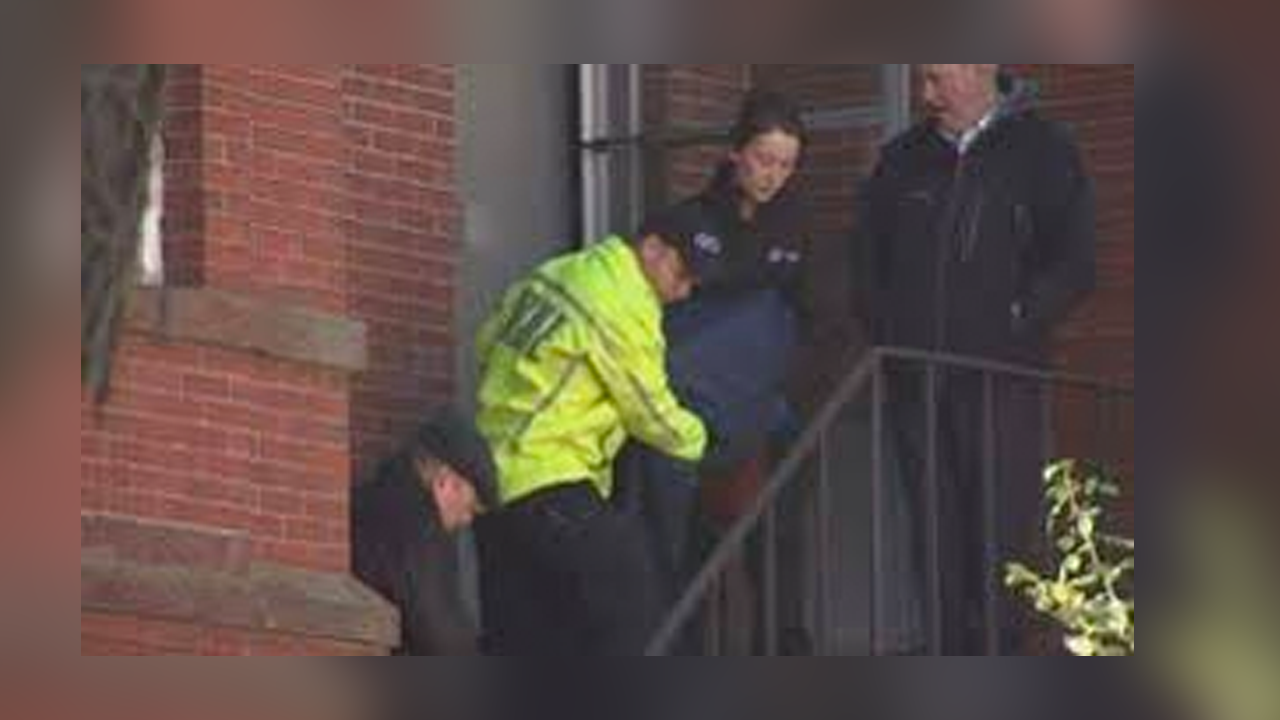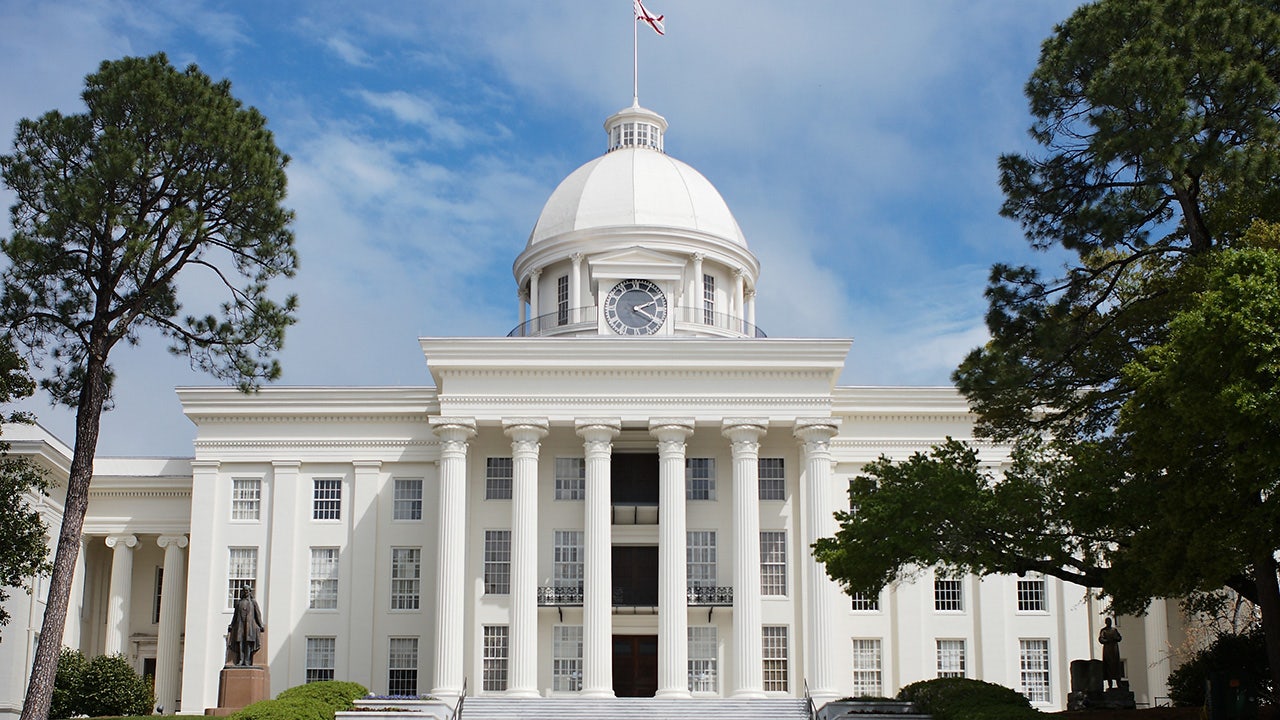Alaska
Biden administration blocks Ambler Road, strengthens protections for NPR-A
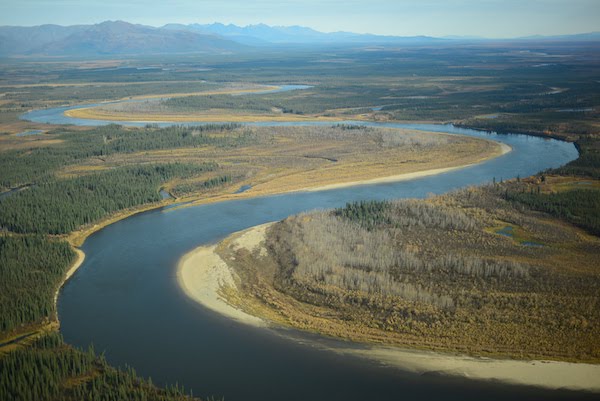
The U.S. Interior Department on Friday essentially rejected the Alaska Industrial Development and Export Authority’s proposal to build the Ambler Road, a 211-mile industrial road that would have cut through Gates of the Arctic National Park and Preserve to access copper and zinc deposits in Northwest Alaska.
The Interior’s Bureau of Land Management chose a “no action” option in its environmental analysis, effectively ensuring AIDEA would not receive a right-of-way to build the road across federal lands. The Biden administration said the road, also known as the Ambler Access Project, would cause irreparable damage to wildlife including caribou, which many local people rely on for food.
The administration also announced stronger protections for 13 million acres inside the National Petroleum Reserve-Alaska, a vast swath of oil-rich — but environmentally sensitive — federal land in the Arctic.
Both Alaska senators, Republicans Dan Sullivan and Lisa Murkowski expressed outrage even before the decisions were formally announced. They said the decisions hamper the state’s economy and domestic resource development.
“It’s more than a one-two punch to Alaska. When you take off access to our resources, when you say you cannot drill, you cannot produce, you cannot explore,” said Murkowski in a press conference on Thursday. “This is the energy insecurity that we’re talking about.”
Environmentalists and some Indigenous rights groups meanwhile, applauded the decisions.
“The regulations announced today will benefit the Western Arctic’s wildlife and subsistence resources and the Indigenous communities that depend on them, as well as provide greater resilience against climate change,” said Meda DeWitt, the Wilderness Society’s interim state director. “This rule is good news for everyone who cares about America’s public lands.”
RELATED: Murkowski and Sullivan rail at federal moves to block Ambler Road and preserve parts of NPR-A


Alaska
Dunleavy says lawmakers shouldn't pass bills to address homeschool decision. Lawmakers say that's risky.
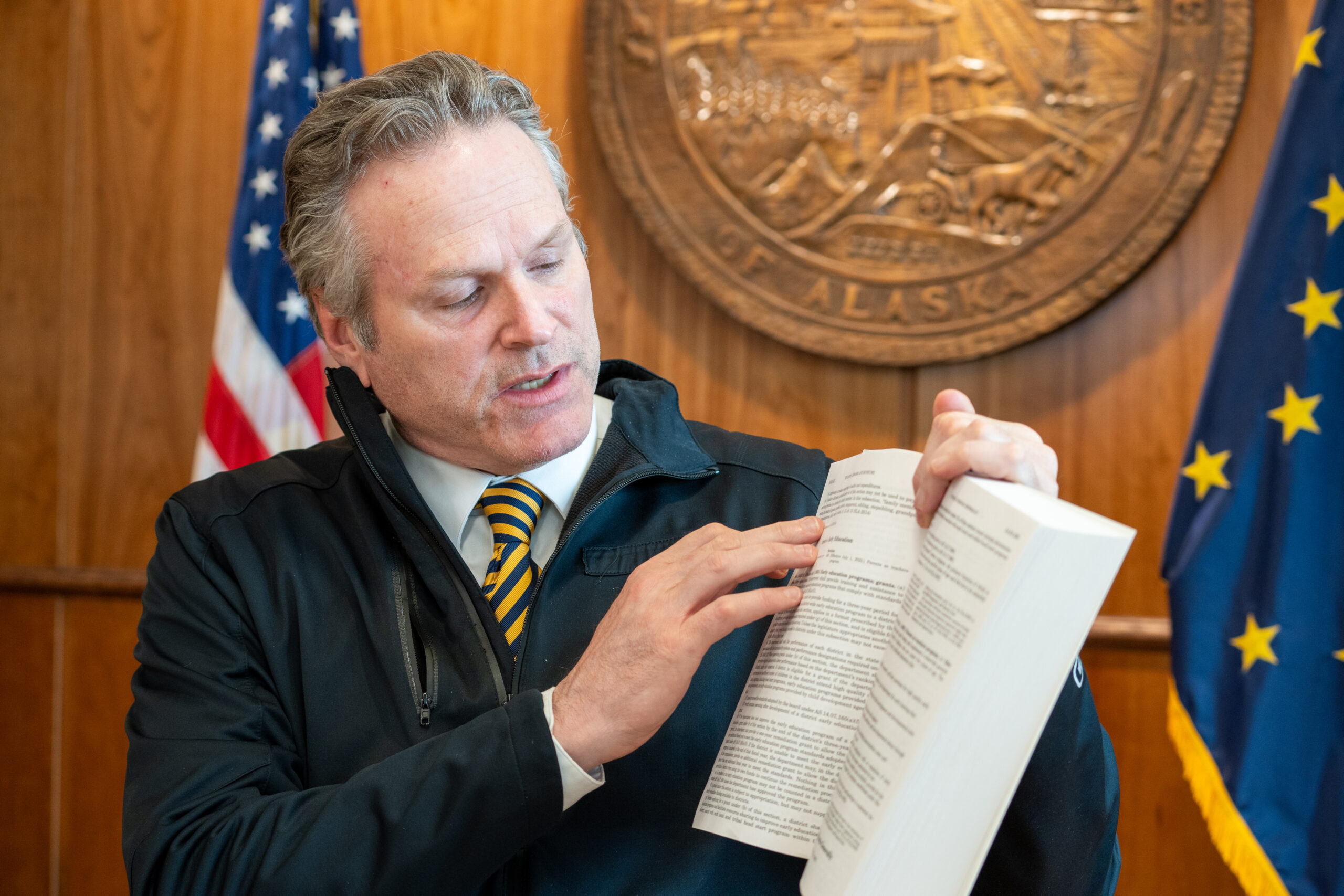
Gov. Mike Dunleavy is calling on lawmakers to pause their efforts to address a court ruling that threatens the state’s homeschool system, saying they should wait for a ruling from the Alaska Supreme Court.
“This is literally a disaster, potentially, an emergency because of its magnitude,” he told reporters at a news conference on Wednesday.
The decision from an Anchorage Superior Court judge found two laws underpinning much of Alaska’s homeschool system unconstitutional. Alaska’s Constitution prohibits spending public money “for the direct benefit of any religious or other private educational institution,” and Judge Adolf Zeman found that payments to homeschool families for things like books and lesson plans had been used for tuition at private and religious schools, which he declared unconstitutional.
But Department of Law Civil Division head Cori Mills, who appeared alongside Dunleavy on Wednesday, said the decision throws a lot more than homeschool spending into question.
“It’s difficult not to read the decision to say that any private organization is impacted,” she said. “So a private organization, in the court’s opinion, seems to equate to a private educational institution.”
And schools spend money on private organizations all the time — books from McGraw Hill, bussing from First Student, tutoring from Sylvan, the list goes on. The plaintiffs’ lawyer in the case, Scott Kendall, said the broad interpretation is “bizarre” and “misleading” and that Dunleavy should seek more guidance from the court. But Dunleavy insisted there’s not much choice but to wait for the Supreme Court to rule.
“This is why we’re saying a quick fix that some are advocating for, we don’t see how it fits into the ruling right now,” Dunleavy said.
But there’s still a big unanswered question: It’s not clear when or if the court’s ruling will take effect. It could be any day, or the end of June as the plaintiffs requested, or longer, as the state and parents backing the homeschool system have requested. And Dunleavy told reporters he’ll likely call lawmakers back to Juneau for a special session if the Alaska Supreme Court doesn’t allow the homeschool laws to stand.
But Sen. Bill Wielechowski, D-Anchorage, said that could be tough to pull off — this summer and fall is campaign season, and he said he’s not sure legislators would be able to get together. So he said he’s in favor of passing a law that puts guardrails on how homeschool funds are spent — or a regulatory fix from the Dunleavy administration that, according to the Legislature’s attorneys, would be compatible with the decision.
“If we put a statute in place, or quite frankly, if there are regulations put in place before that, then homeschoolers will have certainty. Correspondence school families will have certainty. They’ll know what the rules are,” he said. “I think if we don’t do that, this potentially creates tremendous uncertainty for families that use correspondence schools.”
The Senate Education Committee rolled out one possible approach in late April. The sponsor, Sen. Löki Tobin, D-Anchorage, says it’d restore components of the system that existed before the 2014 law that was declared unconstitutional.
The House Education Committee has its own version of a fix. It would more closely mirror the more recent homeschool system, but with stricter limits on buying things like ski passes, power tools and private school classes.
Education Committee co-chair Rep. Justin Ruffridge, R-Soldotna, called for an immediate legislative fix after the decision came out — and despite Dunleavy’s call to hold off, he says that’s still the plan.
“Well, I think if we say we can’t pass statutes to fix things, why would we ever pass a statute ever again?” Ruffridge said.
He said he agrees with Dunleavy that lawmakers have to think long-term. But he said passing a law clarifying the rules would be a good idea.
“We also have to take a view that says, ‘How do we bring stability to folks?’” Ruffridge said. “It’s a lot of people, 23,000 students, so I think we have an obligation to both.”
Doing nothing, Ruffridge and Wielechowski said, risks leaving homeschool families even more in limbo than they already are.
Eric Stone covers state government, tracking the Alaska Legislature, state policy and its impact on all Alaskans. Reach him at estone@alaskapublic.org.
Alaska
Alaska Senate passes draft budget, confirming $175M in bonus public-school funding

The Alaska Senate on Wednesday approved a draft $12.25 billion state operating budget and in the process, finalized legislative plans to offer public schools a one-time, $175 million funding bonus.
The Senate’s proposed Permanent Fund dividend is about $1,580 per recipient, including an estimated $222 energy relief payment. That’s below the $2,270 figure included in a competing draft passed by the House, and the final figure will be subject to further debate.
The smaller amount reduces the risk of the state spending down savings.
“We’re living within our means. This is what it looks like,” said Sen. Bert Stedman, R-Sitka and co-chair of the Senate Finance Committee.
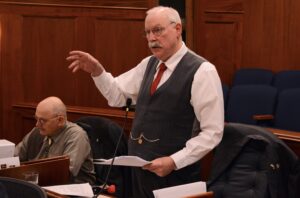
Stedman said the budget balances if the state’s oil production hits estimates and if North Slope oil prices average $78 per barrel between July 1, 2024, and June 30, 2025.
Oil and other sources of revenue would be enough to pay for state operations, as well as new legislation and the state’s capital budget, which pays for construction and renovation projects statewide.
Wednesday’s 17-3 vote, which follows the state House’s passage of its own draft operating budget, triggers the final phase of the Alaska Legislature’s annual budget process, where legislators negotiate a compromise between the two drafts.
In places where the drafts match, the relevant item is final, except that Gov. Mike Dunleavy has the ability to reduce or eliminate final items with his line-item veto power. He cannot increase them or add new ones.
On education, the Senate included a $680 one-time boost to the state’s Base Student Allocation, the core of Alaska’s per-student funding formula.
That’s worth about $175 million statewide, and the same language is in the House’s draft budget, making the item final, except for the governor.
Last year, Dunleavy vetoed half of an identical one-time boost, but in a news conference with reporters on Wednesday, the governor signaled that he may not repeat his veto.
“I’ve told people I’m open to the increase,” Dunleavy said, “an increase in one-time funding, especially to help with the inflationary issues.”
The Senate budget also includes a House-adopted plan to spend $5.2 million more on reading programs for students in kindergarten through third grade.
Senators included additional money for student transportation, something that will have to be negotiated with the House, which did not include it.
Also subject to further negotiation is $11.9 million in education money added after the federal Department of Education warned that the state underfunded some school districts during the COVID-19 pandemic.
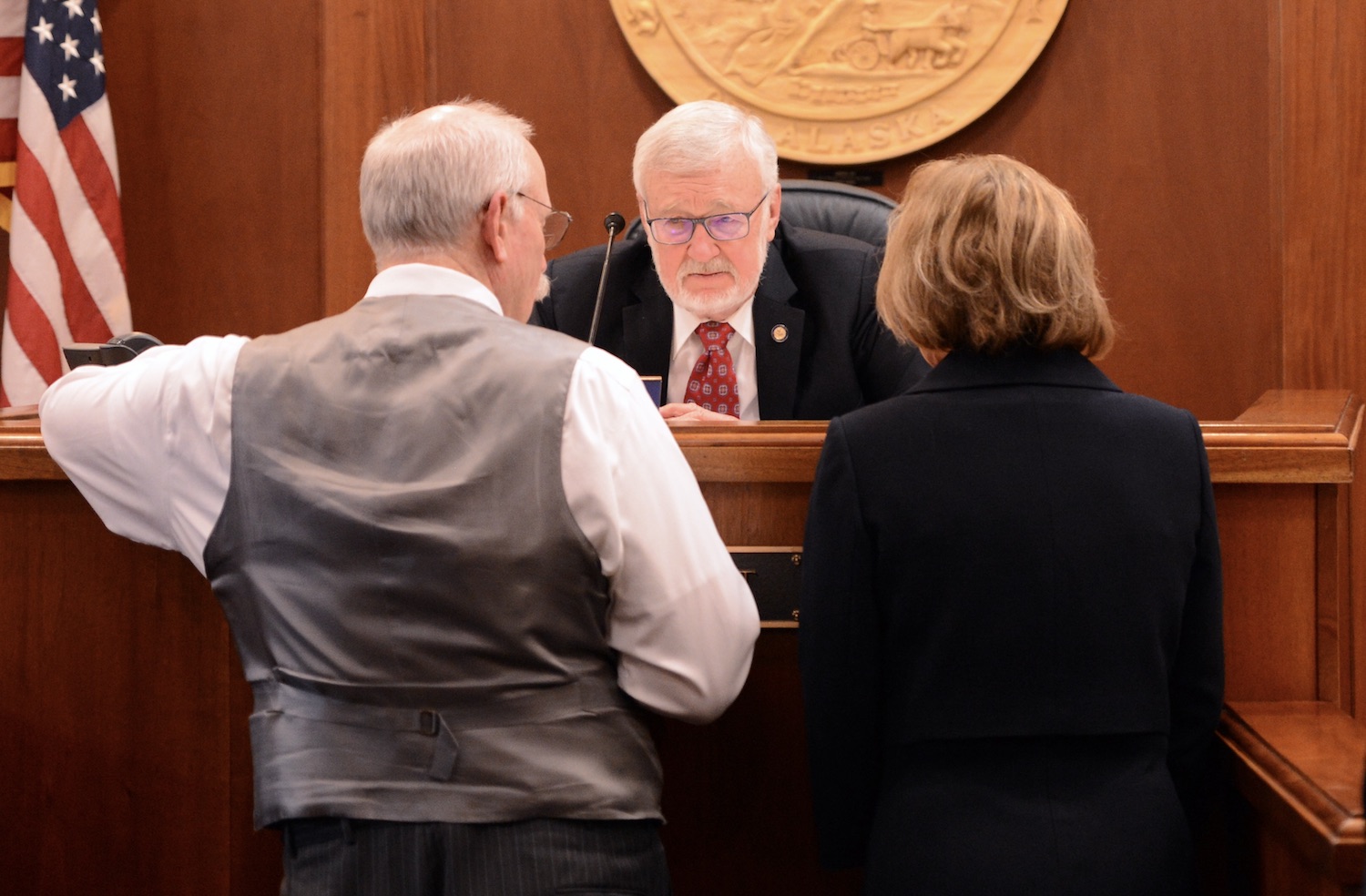
The Senate is led by a supermajority of nine Democrats and eight Republicans, and Wednesday’s draft budget was crafted by that supermajority.
Before the final vote, the three Republicans outside the majority offered 21 amendments containing a variety of priorities, but all failed.
The most contentious amendments dealt with the amount of this year’s Permanent Fund dividend, which Stedman labeled “the focal point of most budgets.”
Sen. Mike Shower, R-Wasilla, proposed taking extra money from the Alaska Permanent Fund to increase the Senate’s proposed dividend to a figure above the House’s amount, once the energy relief payment is included.
While much of the fund is constitutionally protected, lawmakers need only a simple majority to break a law that limits spending from the fund’s earnings reserve, which contains money accumulated from the fund’s investments.
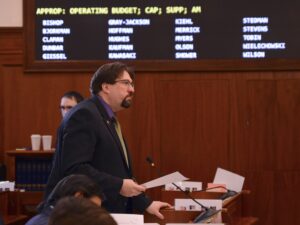
Shower said his proposed dividend is what was recommended by a bipartisan, bicameral working group and implied that passage could encourage work on a plan to bring the state’s long-term finances into balance.
He had support from Sen. Shelley Hughes, R-Palmer, who said, “If we were to pass this, we would start on the road toward a fiscal plan.”
But a majority of other senators opposed the idea. Stedman said he believed the amendment would instantly create a billion-dollar deficit.
“I don’t think this is a prudent amendment,” he said.
Sen. Forrest Dunbar, D-Anchorage, said he’d like to see larger dividends, but thus far, the Legislature hasn’t advanced other needed components of the financial plan, including new state revenue.
Shower’s amendment failed, 6-14.
The House and Senate are expected to appoint lawmakers to a budgetary conference committee on Monday, starting work on a final budget draft.
The budget is typically the final item passed before the Legislature adjourns for the summer.
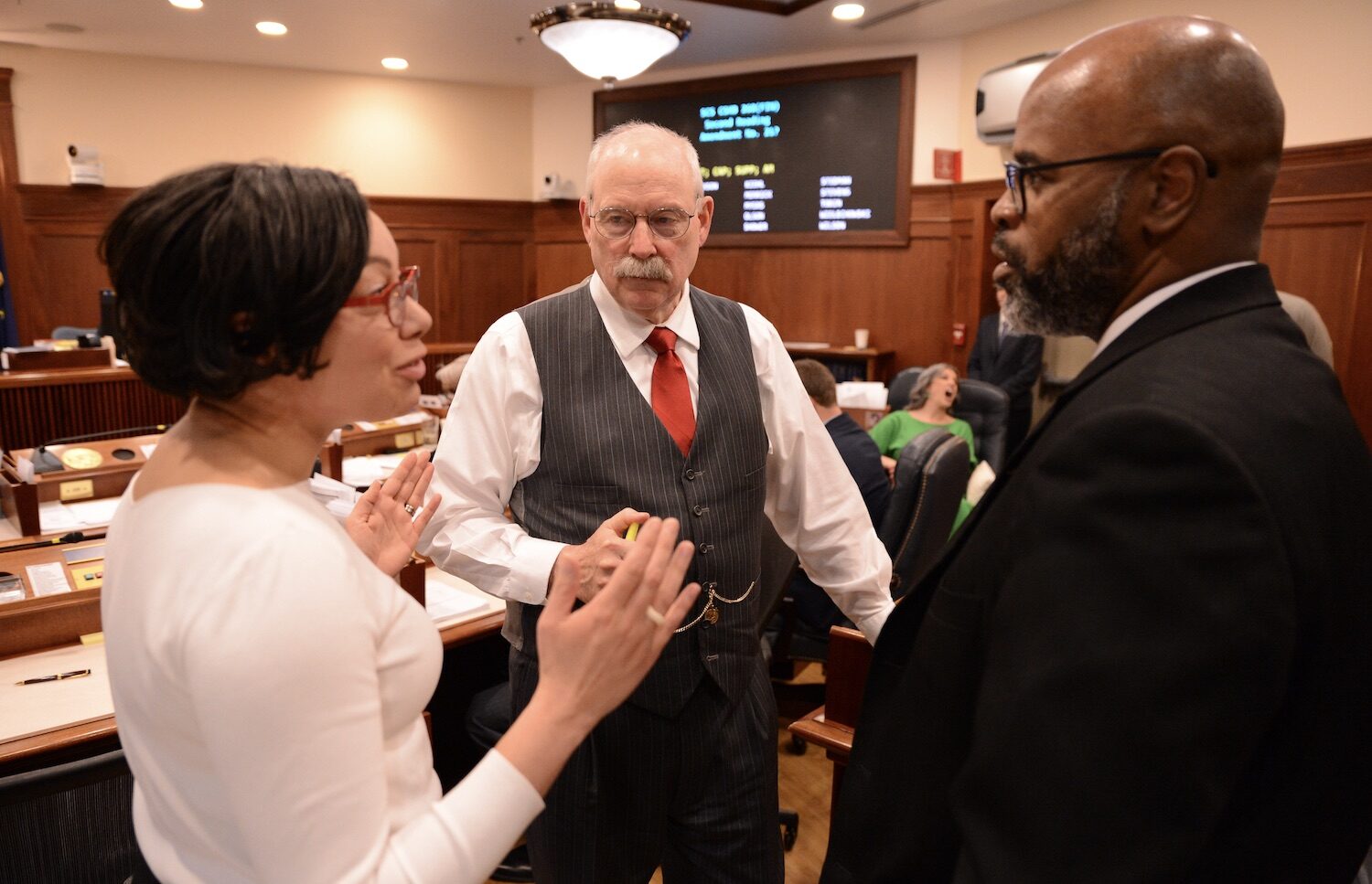
Alaska
Making the Most of It in Alaska's Ruth Gorge » Explorersweb

There’s a tradition of improvisation on Mount Dickey in Alaska’s Ruth Gorge. Season after season, the mountain’s mile-high granite faces draw the planet’s best climbers. And season after season, these visitors watch their main objectives evaporate as Mother Nature forces them to obey.
That doesn’t mean they fail.
Tom Livingstone and Gaspar Pintar are the latest pilgrims in the Mt. Dickey saga. The Great Wall (ungraded as of this writing) slices across lower slabs and up a tenuous couloir to the 2,909m summit. It’s an unconventional line on the mountain’s often-overlooked south face.
Its features attracted Livingstone and Pinter as soon as they arrived in the Gorge, but amounted to Plan B. Originally, they had set their sights on the classic east face route Blood From the Stone — but it didn’t give passage.
“When we swung our axes into what we hoped was ice, we found mostly unprotected sugar snow,” Livingstone wrote on Instagram. He noted other routes stopped them with similar obstacles.
Bad rock, few routes
Pivoting, he and Pintar refocused on the south face. It’s famous for bad rock and generally bereft of routes. But the climbers noticed an opportunity.
“Crazy slabs” protected the couloir and summit access, Livingstone wrote. But the climbers made a bid anyway.
“Many pitches looked improbable, always tricky. The weather was fickle, but we got lucky,” Livingstone reported. “A subtle traversing line up steep rock led us to the middle of the face, pumpy ice, and a cave bivy. Then we zigzagged higher as snow fell (or rather, rose in the updraft).”
Another marginal bivy on a “snow arete” led to pitches of overhanging neve to the top. In their weeks-long stay, this would be the only summit the two touched.
“Conditions seem ‘bad’ this year but we’re happy to have made the most of it,” Livingstone commented — a takeaway that falls directly in line with the recent history of Ruth Gorge climbing.
Failure or opportunity?
For an adroit alpine climber, Blood From the Stone (1,524m, A1 M7+ WI6+X) is a juicy prize. That’s part of the reason Sean Easton spent multiple seasons establishing it with the likes of Ueli Steck. Deterred over and over by ephemeral ice, Easton finally broke through in 2002 with Steck.
The threshold was thin, even though both climbers were at the height of their fitness. (Steck was fresh off his groundbreaking Eiger solo.) Each man took lead falls that would unnerve the masses, and Easton published a breathy report in the American Alpine Journal.
“With moments of doubt, we had ventured forth without certainty…and the path had unwound before us,” he said.
Thin ice and outright difficulty combined to prevent a repeat for over two decades. Livingstone and Pintar are not the first Blood hopefuls to abandon the route and create their own. Alan Rousseau and Jackson Marvell followed the same blueprint to stamp out Ruth Gorge Grinder (1,524m, AI6+ M7 A1) in 2019.
“A pitch and a half up [Blood From the Stone], it became obvious to me there was not enough ice on the route to safely continue,” Rousseau wrote. “If we didn’t feel defeated enough already in that moment, as we rappelled back to the bivy, we saw two ravens fervently tearing through Jackson’s bag of stashed food.”
Defeat, shmefeat. Marvell and Rousseau returned to the Ruth with Matt Cornell in 2023. Another new east face line, Aim For the Bushes (1,600m, AI6 M6X) resulted.
In the Ruth Gorge, one thing’s clear: Just because a rope team backs off doesn’t mean they’re out of the fight.
“In total, we tried six routes,” Livingstone said of his and Pintar’s trip, “staying busy and psyched! Hats off to folk who’ve climbed routes here.”
-

 News1 week ago
News1 week agoLarry Webb’s deathbed confession solves 2000 cold case murder of Susan and Natasha Carter, 10, whose remains were found hours after he died
-

 World1 week ago
World1 week agoHaiti Prime Minister Ariel Henry resigns, transitional council takes power
-

 News1 week ago
News1 week agoFirst cargo ship passes through new channel since Baltimore bridge collapse
-

 World1 week ago
World1 week agoUS secretly sent long-range ATACMS weapons to Ukraine
-

 World1 week ago
World1 week agoSpanish PM Pedro Sanchez suspends public duties to 'reflect'
-

 News1 week ago
News1 week agoAmerican Airlines passenger alleges discrimination over use of first-class restroom
-

 World1 week ago
World1 week agoAsia bears biggest climate-change brunt amid extreme weather: WMO
-

 Movie Reviews1 week ago
Movie Reviews1 week agoHumane (2024) – Movie Review



